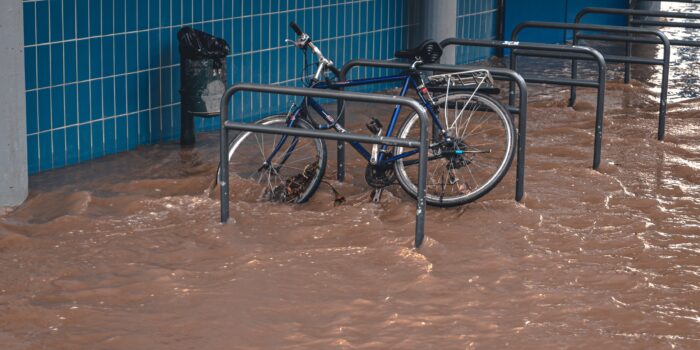Flood risk for planning is becoming an increasingly…

Floods are a growing issue worldwide – here’s how you can stay above the rising tide
According to the United Nations Office for Disaster Risk Reduction (UNDRR), 91% of natural disasters were climate related, 43% of which were floods.
In fact, between 1998 and 2007 flooding impacted over two million people worldwide, incurring economic losses of an estimated $656 billion (£458 million or €547 billion).
With the warming climate, scientists expect there to be 10% more rainfall by 2100. Although this may seem a long way off, rainfall is likely to increase year on year up to this point. Therefore, flood risk is becoming an increasingly pressurised issue for all manner of developments, both existing and potential.
Increasing rainfall is not just a problem in itself. When coupled with a growing population (which leads to increased urbanisation and higher demand for developments in areas prone to flooding) the issue is compounded as the rainfall cannot soak into the ground as it naturally would have had the land been left in its natural, undeveloped state.
In already urbanised areas, drainage systems are often out of date. This is clearly seen in the recent flood alleviation schemes in East Belfast, as the above issues overwhelmed the drainage system serving the area, which dated back 1900.
Such severe cases are becoming more common across Northern Ireland, such as last weekend’s flooding which left a woman trapped in her car in South Belfast or July’s flooding which saw Newcastle County Down completely cut off. Newcastle’s flooding in particular caused residents to question why the infrastructure left their homes destroyed.
South Down MP Chris Hazzard questioned “Given the fact the Department of Infrastructure knew this storm was coming, why weren’t they prepared in advance? Why were sandbags and other emergency equipment not on location yesterday? Instead, families were left scrambling when it was too late.”
A Newcastle local and Flood Risk Expert, Micheál O’Sullivan, said although this flood is highly irregular, flooding is still becoming more frequent and intense to areas such as Newcastle.
“For anyone considering developing or buying land in flood-prone areas such as Newcastle, a Flood Risk Assessment is of vital importance. This will allow scientific appraisal specific to your site to ascertain whether flooding will likely impact the site. It can also determine whether developing the site will negatively impact its surrounding area, which could lead to costly legal fees in the future.
“If such risks are identified, 99% of the time, we have been able to identify ways to alleviate and these risks and allow for safe future development. Contrary to popular belief, this can even be done in areas in flood plains using In one case, we even identified sustainable ways for a recreational centre to be safely developed on a DfI Rivers Agency defined fluvial floodplain.”
To read about the range of Flood Risk Assessment services OSM offers, click here.
To read more of our case studies, click here: Case Studies | O’Sullivan Macfarlane Environmental Consulting (osmenvironmentalconsulting.co.uk)




Comments (0)